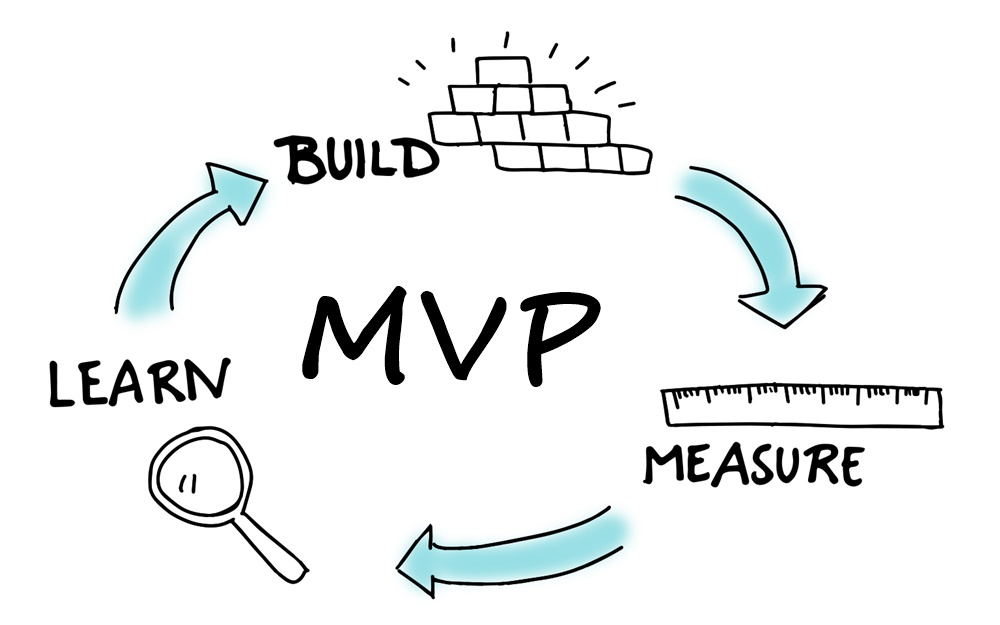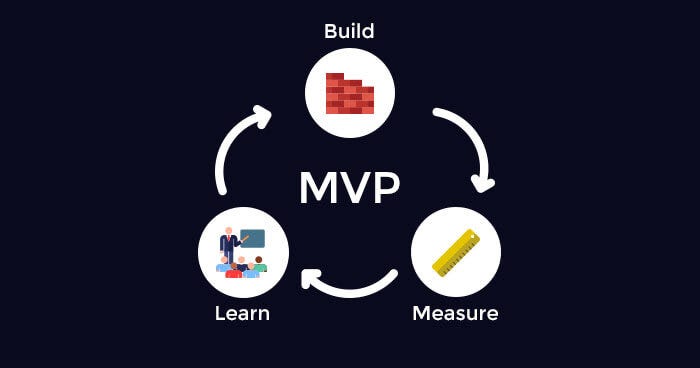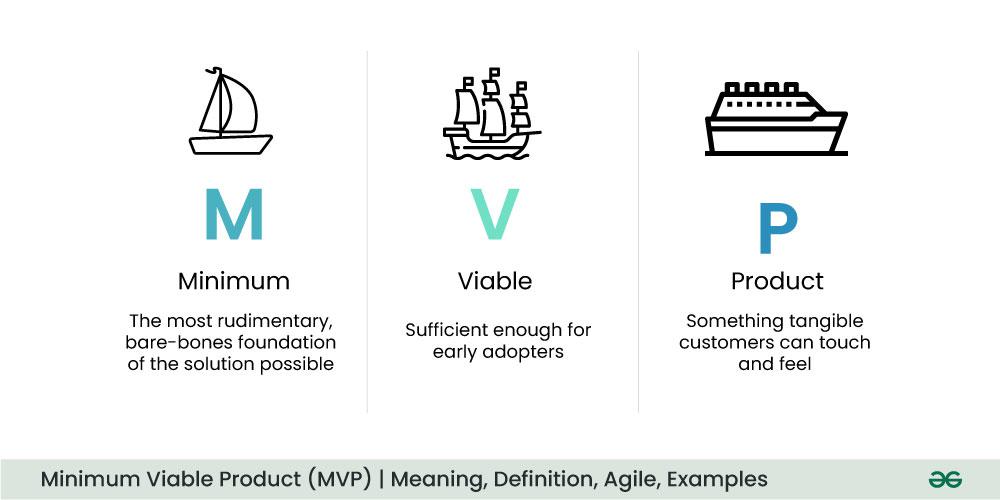You have a brilliant software idea. You’ve sketched features, imagined the user experience, and envisioned how it will transform your business. Now you’re talking to developers who keep asking: “What’s your MVP?”
You’ve heard the term before—Minimum Viable Product—but you’re not entirely sure what it means practically. Does it mean building cheap, half-finished software? Creating something barely functional? Or is there more to it?
Here’s the uncomfortable truth: most software projects fail not because ideas are bad, but because teams build too much before learning whether anyone actually wants it. They spend months or years perfecting features nobody uses. They invest hundreds of thousands in building comprehensive solutions that miss the market entirely.
MVP is the antidote to this waste. It’s a disciplined approach to custom web application development that prioritizes learning over building, validation over features, and real user feedback over assumptions.
But MVP is widely misunderstood. People confuse “minimum” with “incomplete” or “low quality.” They think viable means “barely works.” These misconceptions lead to MVPs that are either too minimal to validate anything or too bloated to ship quickly.
This guide explains what MVP actually means, why it matters for your software projects, and how to build MVPs that efficiently validate your ideas while managing risk and budget.
What MVP Actually Means
Minimum Viable Product is the smallest version of your software that delivers enough value to attract early users and validate your core assumptions about the problem you’re solving.
Let’s break down each word:
Minimum: The fewest features necessary to test your core value proposition. Not “cheap” or “poorly built”—just focused. Every feature should serve a clear learning objective. If removing something doesn’t prevent you from learning what you need to know, it doesn’t belong in the MVP.
Viable: Actually useful to real users. It solves a genuine problem well enough that people will use it despite missing features they might want. Viability is the crucial distinction between MVP and prototype—MVPs must deliver real value, not just demonstrate concepts.
Product: Something you can put in front of real users in real conditions. Not a mockup, not a demo, not a presentation. An actual working product people can use.
The goal of an MVP isn’t building software—it’s learning whether your core idea works before investing heavily in full development. You’re testing assumptions: Do people have this problem? Will they use this solution? Will they pay for it? Does it work as intended?
Think of MVP like opening a food truck before building a restaurant. The food truck serves a limited menu in a temporary location, but the food is real and customers pay real money. You learn whether people like your concept before investing millions in a permanent restaurant.
Why MVP Matters for Your Business

MVP approach might seem like it slows you down—why not just build the complete vision immediately? Because building the wrong thing perfectly is far worse than building the right thing incrementally.
MVPs Reduce Risk
Software development is expensive and risky. The average custom application costs $10,000-$50,000 and takes 6-12 months to build completely. If your assumptions are wrong, that’s massive sunk cost and lost time.
MVP lets you test core assumptions with 20-30% of full development cost and 2-4 months timeline. If assumptions prove wrong, you’ve spent $30,000 and 3 months learning what doesn’t work—painful but survivable. If assumptions prove right, you’ve validated your direction before major investment.
MVPs Accelerate Learning
You don’t really know how users will behave until real users interact with real software. All the planning, research, and design work involves assumptions that only actual usage validates or disproves.
MVP gets your software in front of users quickly, generating real feedback. This learning compounds—each iteration incorporates actual user behavior, making your product increasingly aligned with market needs.
MVPs Improve Final Products
Counterintuitively, starting with MVP often results in better final products than building comprehensively from the start. Early user feedback reveals what actually matters versus what you assumed would matter.
Features you thought were critical turn out to be rarely used. Features you considered minor become the most beloved aspects. Usage patterns you never anticipated emerge. MVP approach lets you incorporate these learnings before investing heavily in the wrong directions.
Companies working with experienced partners like Desol Int on custom web application development use MVP methodology to validate ideas efficiently, incorporating real feedback before scaling investment.
What Belongs in Your MVP

The hardest part of MVP is deciding what to include and what to defer. Most people err toward including too much, defeating MVP’s purpose.
Start with Your Core Value Proposition
What’s the one problem you’re solving? What’s the unique value you’re providing? Everything in your MVP should directly support or demonstrate this core value. If a feature doesn’t contribute to your central value proposition, it doesn’t belong in MVP regardless of how “nice to have” it seems.
Example: If you’re building a project management tool and your core value is “dramatically simpler task assignment,” your MVP needs excellent task assignment and nothing else. Not time tracking. Not budgeting. Not reporting. Just the simplest, most elegant task assignment possible.
Include Only Essential User Workflows
Map the absolute minimum path users must follow to get value from your product. What’s the shortest route from first interaction to experiencing your core benefit?
For an e-commerce platform, the essential workflow might be: browse products, add to cart, checkout, complete purchase. That’s MVP. Customer reviews, wishlist functionality, advanced filtering, recommended products—all valuable, none essential for MVP.
Defer These Common Features
Certain features almost never belong in MVPs despite seeming important:
Advanced customization and settings. Users can tolerate defaults initially. Learn what settings actually matter before building configuration.
Comprehensive reporting and analytics. Basic metrics suffice initially. Build sophisticated reporting once you know what metrics actually drive decisions.
Multiple integration options. Start with one critical integration if necessary. Add others based on actual demand rather than anticipated need.
Extensive automation. Manual processes are fine initially at small scale. Automate based on where inefficiencies actually emerge with real usage.
Polish and refinement. MVP should work reliably but doesn’t need pixel-perfect design or smooth animations. Polish comes after validation.
The One-Feature MVP
Many successful products started as one-feature MVPs. Dropbox’s MVP was just file syncing—no sharing, no collaboration, no mobile apps. Instagram was just photo filters—no stories, no reels, no shopping.
These companies resisted the temptation to build comprehensive solutions upfront. They validated core value propositions with focused MVPs, then expanded based on user feedback and demand.
Common MVP Mistakes to Avoid
Understanding what MVP is requires understanding what it isn’t. These common mistakes undermine MVP effectiveness.
Mistake 1: Building Too Much
The most common mistake is including too many features. “But users will want this” becomes justification for bloating MVP. Remember: MVP tests whether users want anything at all. Additional features can wait until you’ve validated core assumptions.
Mistake 2: Building Too Little
The opposite mistake is creating something so minimal it doesn’t actually work as a viable product. If users can’t accomplish meaningful tasks or extract real value, you’re not testing anything useful. Your MVP must be genuinely useful despite being minimal.
Mistake 3: Confusing MVP with Prototype
Prototypes demonstrate concepts. MVPs deliver value to real users. Prototypes are for internal validation. MVPs are for market validation. Don’t present prototypes as MVPs or you’ll get worthless feedback from users treating it like a demo rather than a tool they depend on.
Mistake 4: Sacrificing Quality for Speed
Minimum doesn’t mean sloppy. Your MVP should work reliably within its scope. Buggy, slow, or unreliable software generates negative feedback about quality rather than useful feedback about product-market fit.
Mistake 5: Ignoring Technical Foundation
Some teams build MVP with no thought to future scaling. When MVP succeeds, they face complete rebuilds because the foundation can’t scale. Your MVP should be minimal in features, not in architectural quality. Build it properly even if you’re building small.
The MVP Development Process
Building effective MVPs follows a structured process from idea to validated learning.
Step 1: Identify Your Riskiest Assumptions
What must be true for your idea to succeed? What are you least certain about? Your MVP should test these critical assumptions. If you’re wrong about them, you want to know immediately before major investment.
Example assumptions: “Small businesses will pay $50/month for this.” “Users will spend time setting this up.” “This integration is technically feasible.” “People prefer this approach over existing solutions.”
Step 2: Define Minimum Feature Set
List features supporting your core value proposition. Then ruthlessly cut everything not absolutely essential for testing key assumptions. When in doubt, defer it. You can always add features based on feedback.
Step 3: Build Quickly but Properly
Speed matters for MVP, but not at the expense of quality. Target 6-12 weeks for typical MVP development. Build with scalable architecture even if functionality is minimal. Work with experienced custom web application development partners who understand MVP discipline.
Step 4: Get Real Users Quickly
Launch to actual users as soon as possible. Friends and family give polite feedback. Paying customers give honest feedback. Real users reveal real behavior. Target 10-50 active users for initial MVP validation.
Step 5: Measure and Learn
Track both usage metrics and gather qualitative feedback. What features do users actually use? Where do they struggle? What questions do they ask? What workflows emerge? This learning informs your next iteration.
Step 6: Decide: Pivot, Persevere, or Stop
Based on MVP results, make informed decisions. If core assumptions validated, invest in expanding. If assumptions partially validated, adjust approach (pivot). If assumptions clearly wrong, stop before throwing good money after bad.
MVP vs. Full Development: When Each Makes Sense
MVP isn’t always the right approach. Understanding when to use MVP versus building more comprehensively helps you choose wisely.
Build MVP When:
You’re testing a new idea without proven market demand. MVP validates whether anyone wants this before major investment.
You’re entering an uncertain market where user needs aren’t clear. MVP helps you learn actual requirements rather than guessing.
You have limited budget and need to prove concept before securing additional funding. MVP demonstrates viability to investors or stakeholders.
Speed to market matters because windows of opportunity are closing or competition is emerging.
Skip MVP and Build More Comprehensively When:
You’re replacing existing internal tools where requirements are well-understood from current usage.
You’re entering established markets with clear user expectations where minimal products won’t be taken seriously.
Regulatory requirements demand comprehensive functionality—you can’t launch partially compliant solutions.
You have strong evidence from extensive research that comprehensive solution will succeed—though be honest about whether your “evidence” is actually validated or just confident assumptions.
Conclusion: MVP as Strategic Discipline
MVP isn’t about building cheap or incomplete software. It’s about strategic discipline—resisting the temptation to build everything upfront and instead focusing on efficient learning.
The companies that succeed with custom software are those that validate core assumptions before major investments. They build quickly, learn from real users, iterate based on feedback, and scale investment as confidence grows.
MVP methodology reduces risk, accelerates learning, and improves final products by incorporating real user behavior from the beginning. It’s not the only approach to software development, but for new ideas in uncertain markets, it’s the smartest approach.
When considering custom web application development, work with partners like Desol Int who understand MVP discipline. They’ll help you identify what belongs in your MVP, build it efficiently without sacrificing quality, and interpret results to guide your next steps.
Your brilliant software idea deserves validation, not blind faith. MVP provides that validation efficiently.
